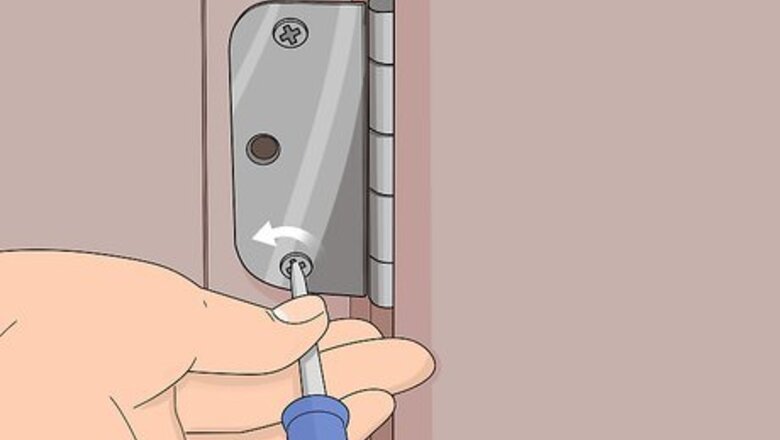
views
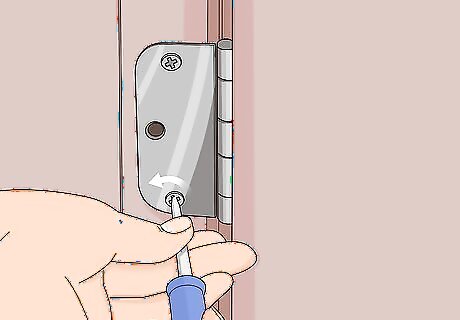
Remove the loose screws and the hinge plate with a drill or screwdriver. Use a screwdriver or electric drill to unscrew the loose screws all the way. Set the screws aside and swing the hinge plate away so it's not covering the loose holes.Tip: This method works best for hinges that are attached to a thick, solid piece of wood, such as a solid wooden door or door frame. If you are fixing just a few loose screw holes for something that has multiple hinges, like a door, you can put a wedge underneath it to support it while you unscrew the loose hinge and fix the stripped holes. If all the hinges have loose screws, remove the door. If there's paint over the hinge, you can slice around it carefully with a utility knife or box cutter to free it so you can swing the plate away.
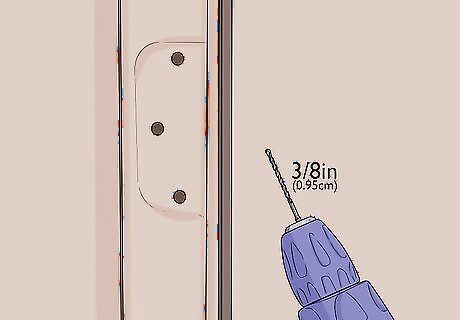
Drill out the loose holes with a ⁄8 in (0.95 cm) drill bit. Attach a ⁄8 in (0.95 cm) drill bit to an electric drill. Drill straight into each of the stripped holes, going at least 1 in (2.5 cm) deep, to bore them out. This will make all the stripped holes a uniform size that you can fit a piece of wooden dowel into perfectly.
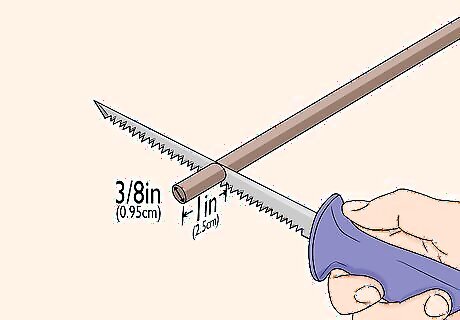
Saw a ⁄8 in (0.95 cm) diameter wooden dowel into 1 in (2.5 cm) long pieces. Measure and mark 1 in (2.5 cm) long sections along the dowel. Use a hand saw or any power saw you have available to cut the pieces. You will need a 1 in (2.5 cm) piece of dowel for each hole you need to fix. If you use a handheld saw, clamp the wooden dowel to a workbench or put it in a vise to hold it steady while you cut the pieces. A wooden dowel is a round piece of wood that comes in rods of varying diameters and lengths. It is available at home improvement centers, woodworking supply and craft shops, or online. If you don't have the tools to cut the dowel yourself, you can purchase pre-cut wooden dowels.
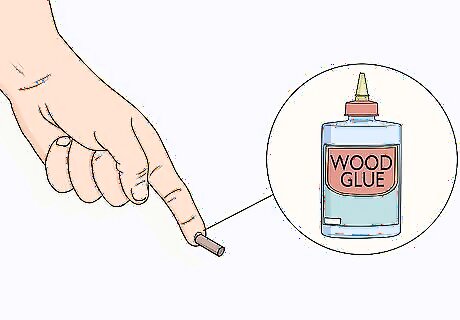
Coat a 1 in (2.5 cm) long, ⁄8 in (0.95 cm) diameter dowel in wood glue. Squeeze a drop of wood glue (also known as carpenter's glue) on the side of the piece of wooden dowel. Use your fingers or a scrap piece of dowel to spread the glue up and down the sides. The carpenter's glue will hold the dowel inside the stripped hole. You could dip the dowel about halfway into a bottle of wood glue, then spread the glue along the sides.
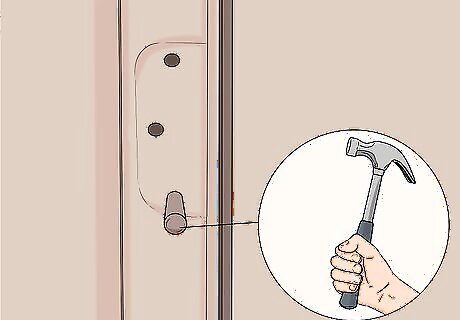
Tap the wooden dowel gently into one of the holes using a hammer. Push one end of the wooden dowel into one of the stripped holes. Carefully tap it in with a hammer until it is flush with the surrounding wood. The wooden dowel will plug the stripped hole, giving you a fresh surface to reattach the hinge. If the dowel isn't flush with the surface, that's okay. Use a handsaw, chisel, or a similar flush turn saw. You can also use sandpaper, though this may require more elbow grease!
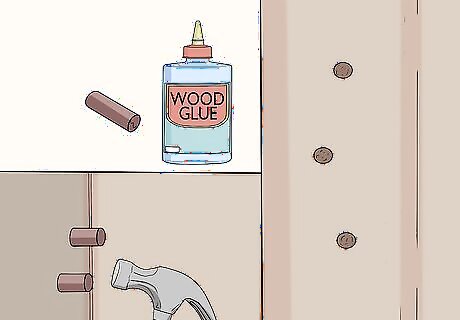
Repeat the process for the rest of the stripped holes. Coat 1-inch-long, 3/8-inch-diameter pieces of wooden dowel in wood glue, one at a time, for each stripped hole. Use your hammer to tap each wooden dowel into each loose hole. Make sure you flush all the dowels with the surrounding wood so the surface is flat.
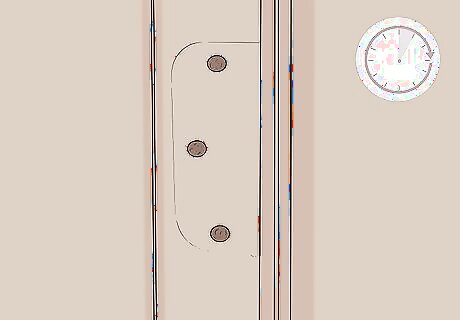
Wait for 1 hour to let the glue dry. This will ensure the dowels are secure when you reattach the hinge. If there is any excess glue that oozed out of the holes, wipe it away with a rag so it doesn't dry and make the surface uneven.

Drill a ⁄8 in (0.32 cm) pilot hole into each wooden dowel using an electric drill. Attach a ⁄8 in (0.32 cm) drill bit to your electric drill. Drill straight into each wooden dowel that you plugged a loose hole with to create pilot holes for the hinge's screws. This will make it easier to reattach the hinge and get the screws in perfectly straight.
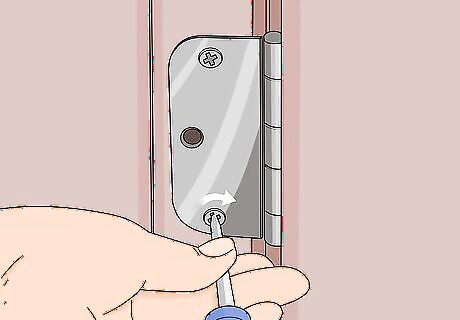
Reattach the hinge using its screws. Position the hinge plate back over the reinforced holes. Put the screws back in through the holes in the hinge into the pilot holes in the dowel.














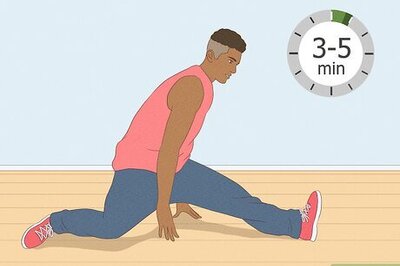



Comments
0 comment